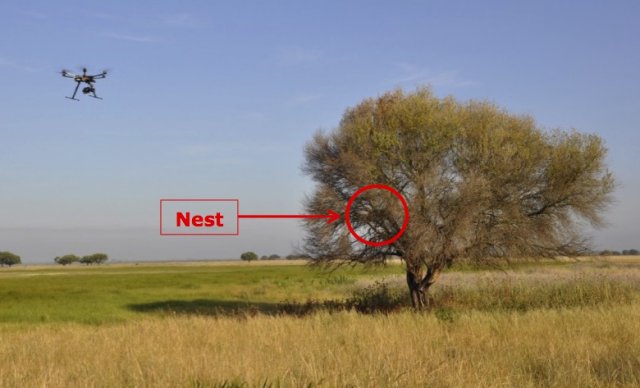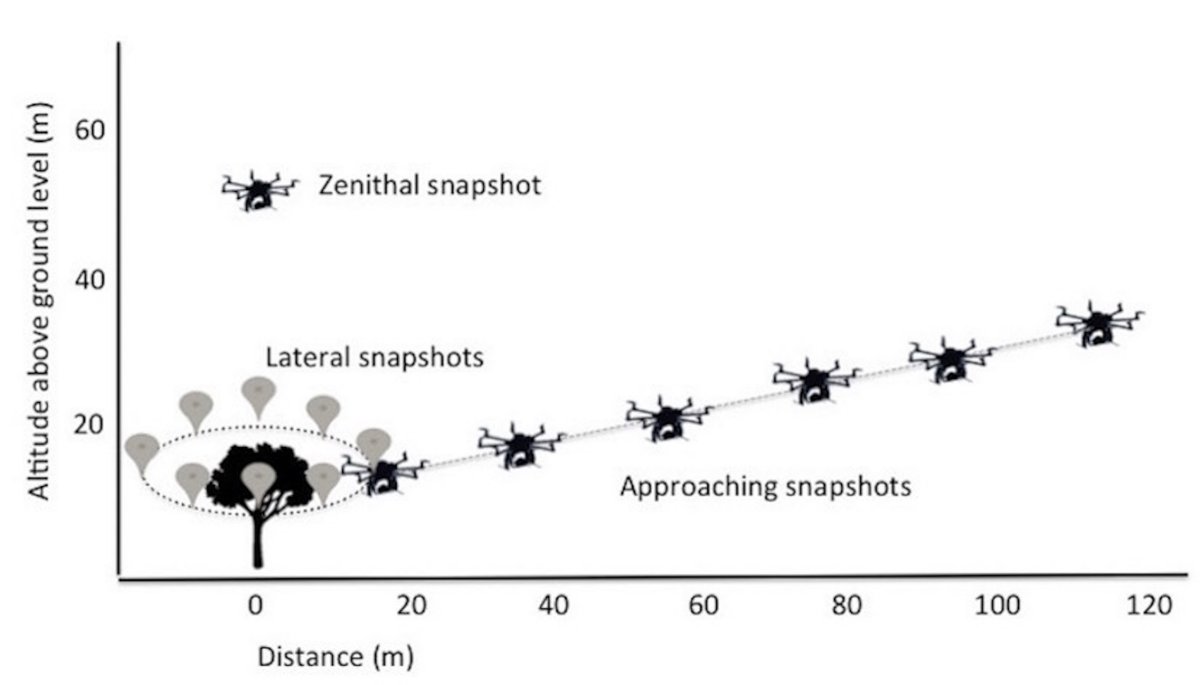 A team from Doñana Biological Station (CSIC) has used an Unmanned Aircraft System (UAS) to test whether nest decorations increased nest-site visibility to conspecifics in black kites (Milvus migrans) in Doñana National Park (Southwestern Spain).
A team from Doñana Biological Station (CSIC) has used an Unmanned Aircraft System (UAS) to test whether nest decorations increased nest-site visibility to conspecifics in black kites (Milvus migrans) in Doñana National Park (Southwestern Spain).
Avian nests are frequently concealed or camouflaged, but some species, such as the black kite, build noticeable nests or use conspicuous materials for nest decoration, that may serve as extended phenotypic signaling of nest-site occupancy and social status to potential intruders. The latter may benefit both signaler and receiver by minimizing the risk of aggressive interactions.
The researchers used a small multicopter to take pictures of black kite nests, with and without an experimentally placed decoration, from different altitudes and distances simulating the perspective of a flying and approaching, prospecting intruder. Decorated nests were consistently detected by human volunteers at a higher frequency and a lower latency, compared to undecorated versions of the same nests.

click to enlarge
The results confirm that nest decoration in this species act as a signaling medium that enhances nest visibility for aerial receivers, even at large distances. This finding complements previous work on this communication system, which showed that nest decoration was a threat informing trespassing conspecifics on the social dominance, territory quality and fighting capabilities of the signaler.
Funding: PLANET Project (European Commission 7th FP Grant Agreement No. 257649), AEROMAB Project (Andalusia Government, Project for Excellence, 2007, P07-RNM-03246), CGL2011-28103 of the Spanish Ministry of Science and Innovation and the Excellence Project RNM 7307 of the Andalusia Government.
Canal D, Mulero-Pázmány M, Negro JJ, Sergio F (2016) Decoration Increases the Conspicuousness of Raptor Nests. PLoS ONE 11(7): e0157440.
Full study available here.
Mara Mulero
ORCID: http://orcid.org/0000-0002-
Web: http://margaritamulero.wix.
Source: Press Release
